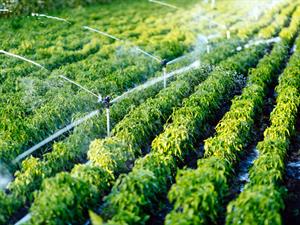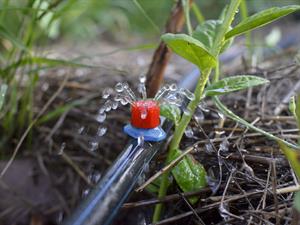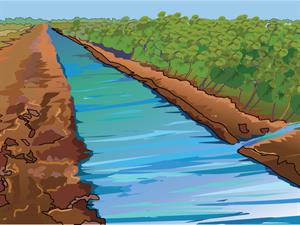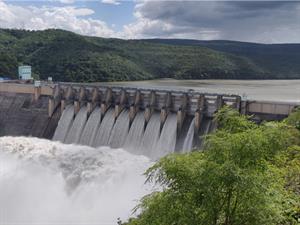
PUMPA - SMART LEARNING
எங்கள் ஆசிரியர்களுடன் 1-ஆன்-1 ஆலோசனை நேரத்தைப் பெறுங்கள். டாப்பர் ஆவதற்கு நாங்கள் பயிற்சி அளிப்போம்
Book Free Demo
Every living being needs water to survive. Water is essential for the growth and development of every living organism. Water is an essential element in agriculture. Plants absorb water from their surroundings with the help of roots.
Water supply should be in the required amount, at the right time, with minimum expenditure. Irrigation is by two different methods:
(i) Moat (pulley-system)
(ii) Chain pump 

Drip System:

The process of supplying water in controlled amounts and regular intervals to the crops is called irrigation.
The time and frequency of irrigation vary from crop to crop, soil to soil, and season to season. In the summer season, the frequency of watering is higher when compared to other seasons. Fertilisers are applied through irrigation.
Sources of irrigation:
The various sources of irrigation are canals, reservoirs, wells, tube wells, ponds, lakes, rivers, dams, etc.
 |  |
Canal and dam
Types of irrigation:
Effective irrigation is a controlled and uniform supply of water to crops.
- Traditional method
- Modern method
Traditional method:
Irrigation is done manually. The water available in wells, lakes, and canals are lifted to the field through different methods in different regions. Cattle or human labour is used in traditional methods. Pumps are used for lifting water from sources. Diesel, electricity, biogas, and solar energy are used to run pumps. So the methods are cheaper but less efficient. Efficiency is less because of the uneven distribution of water. It also leads to heavy water loss. Examples of traditional ways of irrigation are:
(i) Moat (pulley-system)
(ii) Chain pump
(iii) Dhekli
(iv) Rahat (Lever system)
(iv) Rahat (Lever system)

Modern methods:
- It helps to overcome the problems that exist in traditional methods.
- Facilitates the even distribution of moisture.
- Employs electricity and engineering to use the water efficiently.
- Involves usage of power and machinery. Thus incurs cost.
There are two prominent methods present in modern methods, which includes:
- Sprinkler system
- Drip system
Sprinkler system:
Water is sprinkled all over the crop, which helps in the even distribution of water. A pump is connected to the pipes through which pressure is generated. Water is forced through small tubes and rotating nozzles attached to a major pipeline with water.
When water is forced through the smaller tubes from the main pipeline, it activates the nozzles and makes the water sprinkle to the adjoining area. A sprinkler is beneficial for lawns, coffee plantations, and other crops. The sprinkler system is useful in uneven surface areas and areas facing water scarcity.

Sprinkler system
Drip System:
In this system, water is made to fall drop by drop at the root zone using a hose or pipe called a drip system. The system suits for watering fruit trees and gardens.
In this system, water is not wasted and is effective where water availability is less, i.e., in dry regions with inadequate water resources.

Drip irrigation
Important!
The global population of India is expected to be 9 \ billion by the year 2050. So, efficient and sustainable water use is needed for our generation and future generations. Agriculture activities alone utilize 70 \% of the available freshwater resources. Thus, drip irrigation is a better solution for the sustainable and economical use of water.